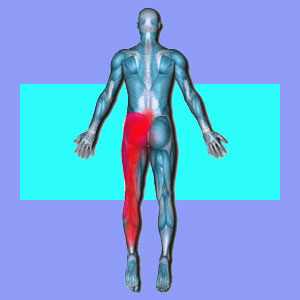
Suffering a sciatica relapse is common, even in postoperative patients who thought they were cured. The only thing more common than relapses of sciatica is the possibility of chronic pain that never ends and so has no chance to recur over and over again. However, recurrent sciatica flare-ups are still a very common event for patients and their pattern may help to pinpoint the underlying source of acute attacks in select circumstances.
Relapses imply that the pain has resolved, but then begins anew. In most patients, a cure for sciatica is little more than a dream, with symptoms recurring regularly in patterned or unpredictable ways over many years time. Some people never seem to be free from sciatica, literally suffering until the day they finally leave this earth. Sciatica is well known as one of the most treatment-resistant forms of chronic pain.
This essay delves into the fear-inspiring subject of sciatica relapse events. We will examine why sciatica recurs, what makes it become chronic and how it can finally be stopped once and for all.
Sciatica Relapse Causation
Relapses occur mostly for idiopathic reasons. Some patients like to link their recurrence to particular triggers (perceived injury), but research has shown that in most cases, these relationships are actually simply programmed behaviors and do not involve actual new injury to the spine. Therefore, in most instances where a patient does some seemingly innocent task that results in pain, the occurrence is not linked by the pathological potential of the activity itself, but instead simply by the belief that the activity was damaging to the back.
Some relapses simply occur without any provocation at all. These may be results of some continuing pathology in the spine, but are often perfect examples of ischemic sciatica that begins to distract from sensitive emotional issues that seek conscious recognition.
Regardless of why sciatica might recur, it is always a harbinger of suffering and a source of great fear, pain and anxiety for the affected patient, particularly over many recurrent episodes.
Sciatica Recurrence or Chronic Pain
Recurring sciatica pain often eventually becomes a chronic problem. This means that instead of episodic pain that flares-up, resolves and then recurs, the patients begins to suffer some degree of pain each and every day. Recurrent back pain and sciatica is already a terrible burden to bear. However, chronic pain is a steady suffering that gives its victims no rest or recuperation time.
Chronic sciatica pain beats down its host until the person is at wit’s end and ready to try anything to find relief. Why do you think so many people eventually acquiesce to undergo spinal surgery, despite its horrible curative statistics? Chronic pain will make any patient do whatever they can to find relief. This includes taking toxic drugs, risking hazardous injections and having their spines barbarically transformed into a dysfunctional disaster by such unneeded procedures as spinal fusion.
Once sciatica becomes chronic and endures longer than 1 year, the patient stands a better chance statistically of suffering pain for the rest of their life than they do of ever finding a cure. This remains the most frightening statistic and the one that motivates us more than any other to keep helping people to end their pain before it takes over their life.
Ending Sciatica Relapse Nightmares
It is possible to cure sciatica and end its recurrence. I did it and so have many other people. In order to accomplish this task, maybe you will simply be lucky and have a great doctor who can cure you now and forever. However, the odds are not in your favor. Instead, we recommend taking a very active role in your care and always being suspicious of whatever type of structural diagnosis is presented to explain your pain. If all these spinal abnormalities were indeed the true cause of sciatica, then the treatments for them would always work. Obviously, something is amiss, given the widespread occurrence of treatment failure and that thing is misdiagnosis.
Most sciatica is mistakenly diagnosed and therefore scoffs at the contraindicated treatments used against it. Once you can achieve an accurate diagnosis, then curing the pain becomes much, much easier. Therefore, we recommend that all patients who have tried several therapies without success seek out new diagnostic evaluation. It makes the most sense.
You can trust our proprietary pain relief program not to fail you. The program has earned the recommendation of countless doctors around the world, since it works. You can get the help you need right now, 24 hours a day, 7 days a week.





